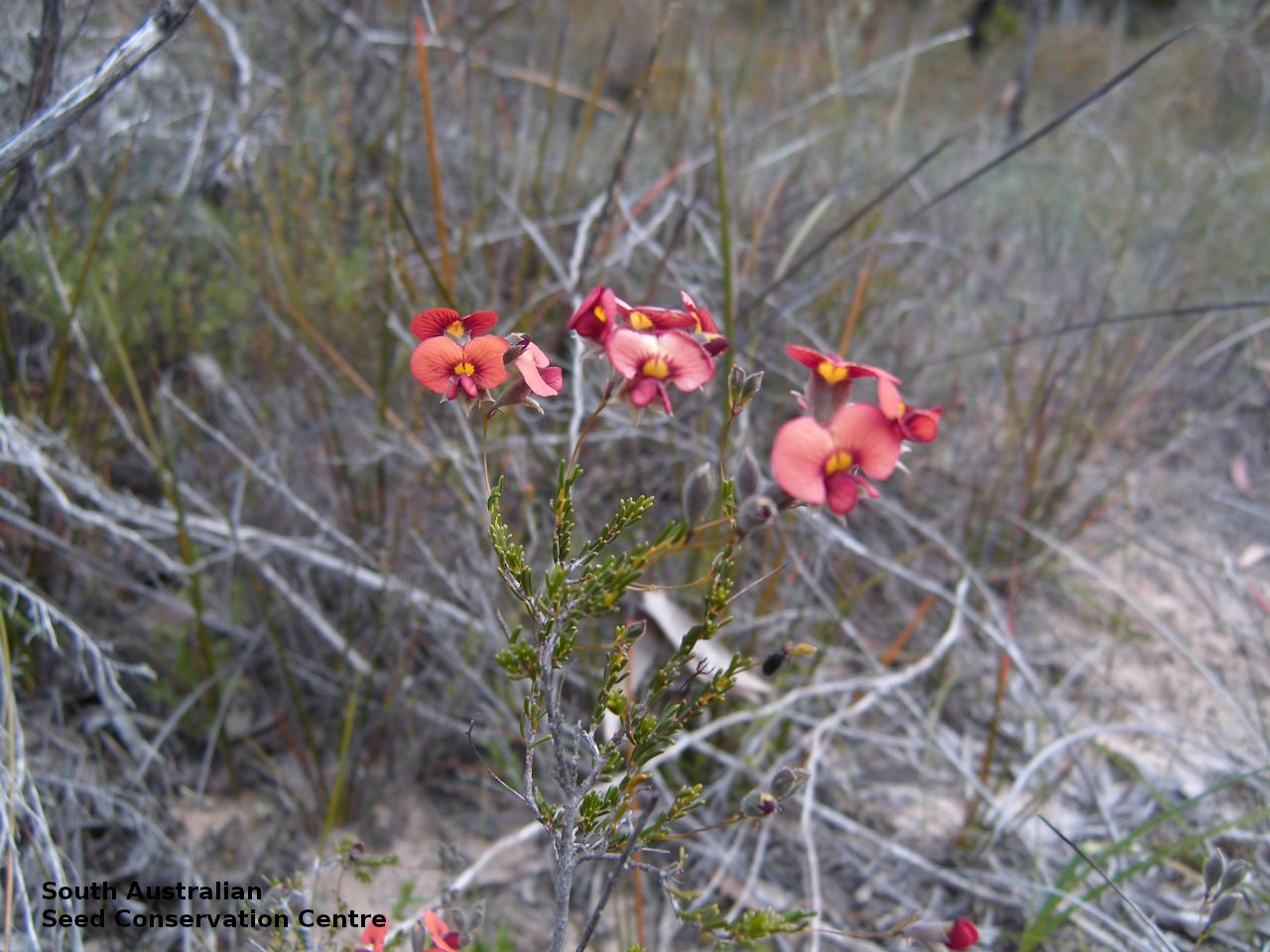
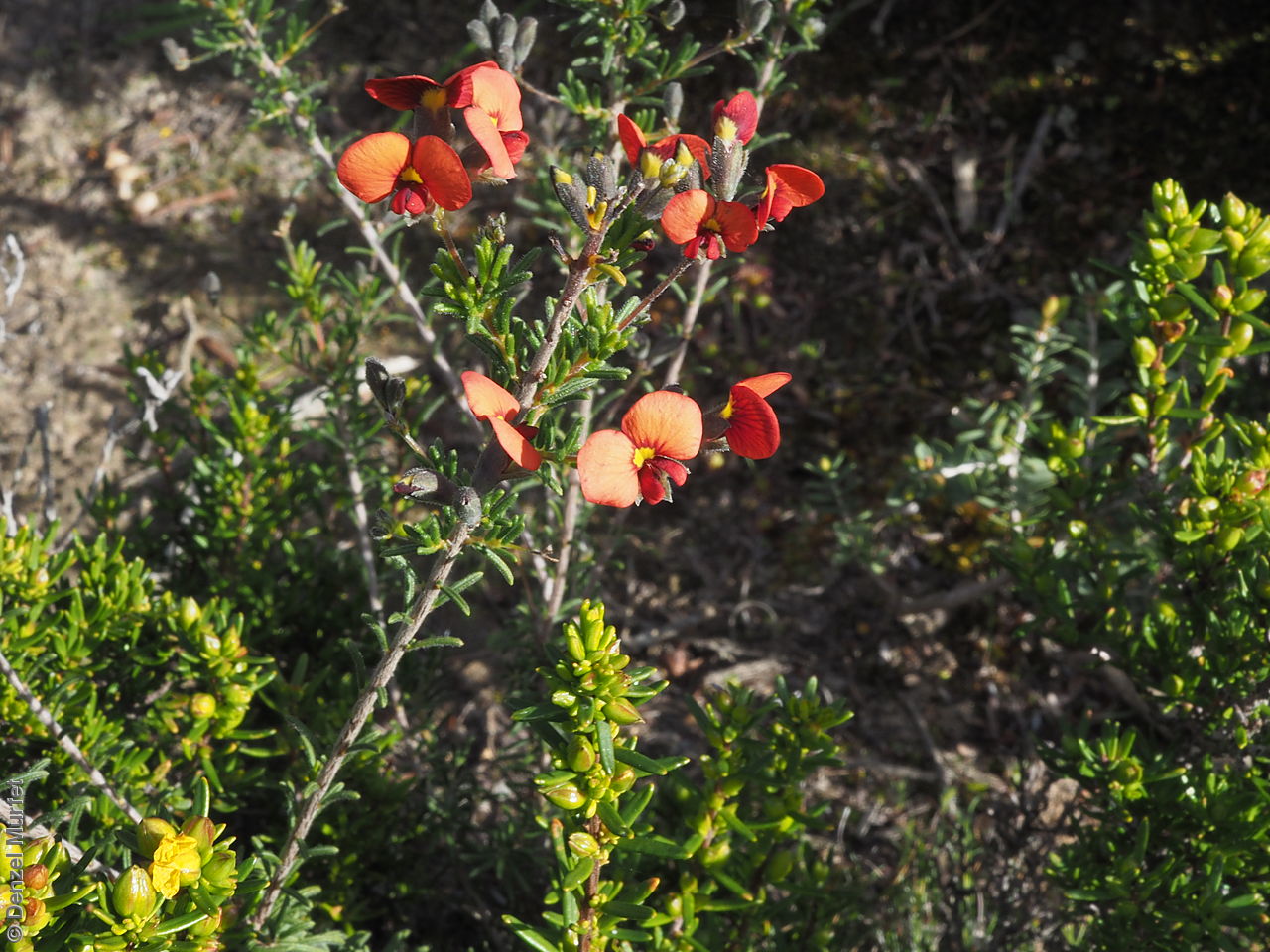
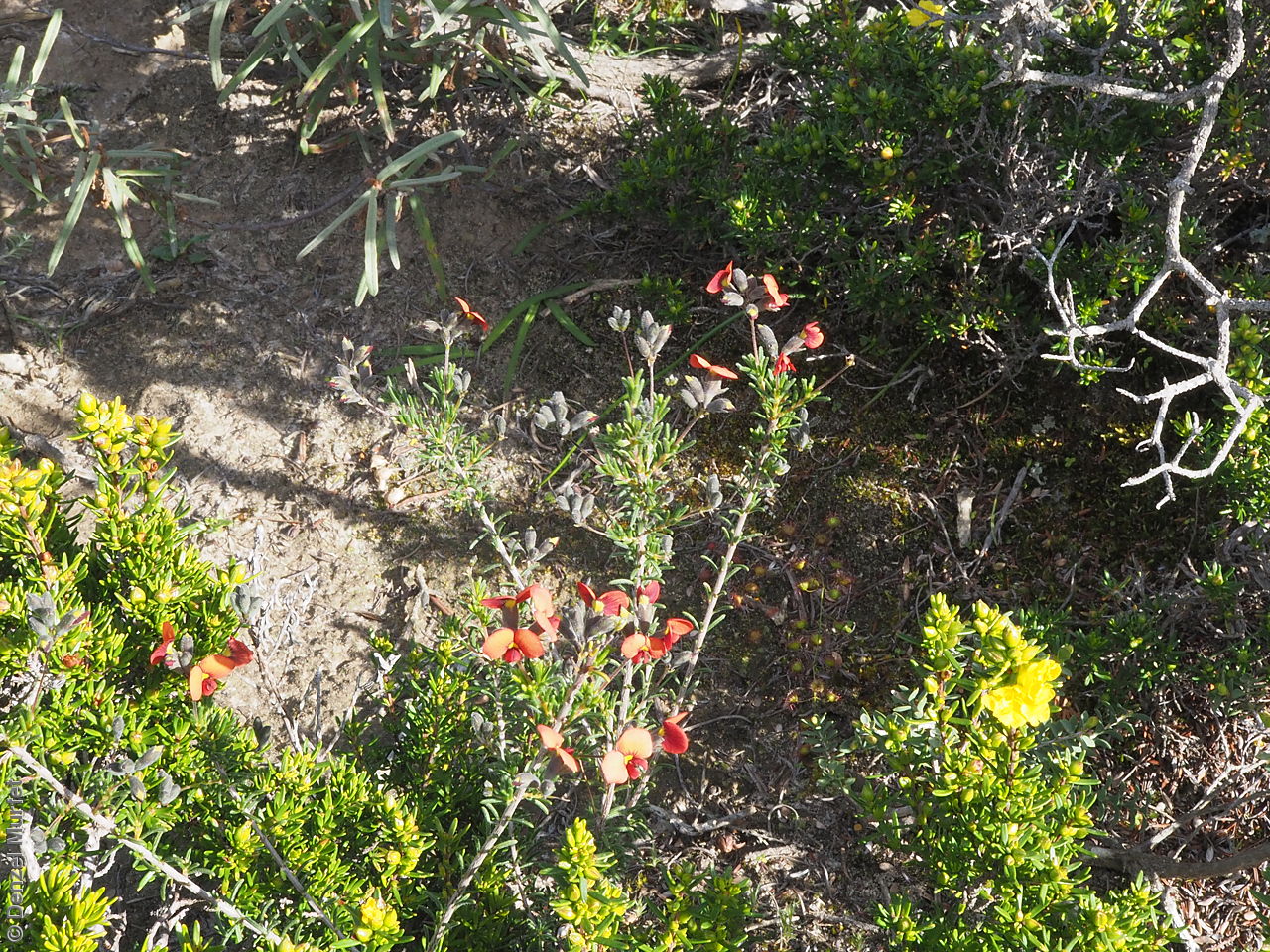
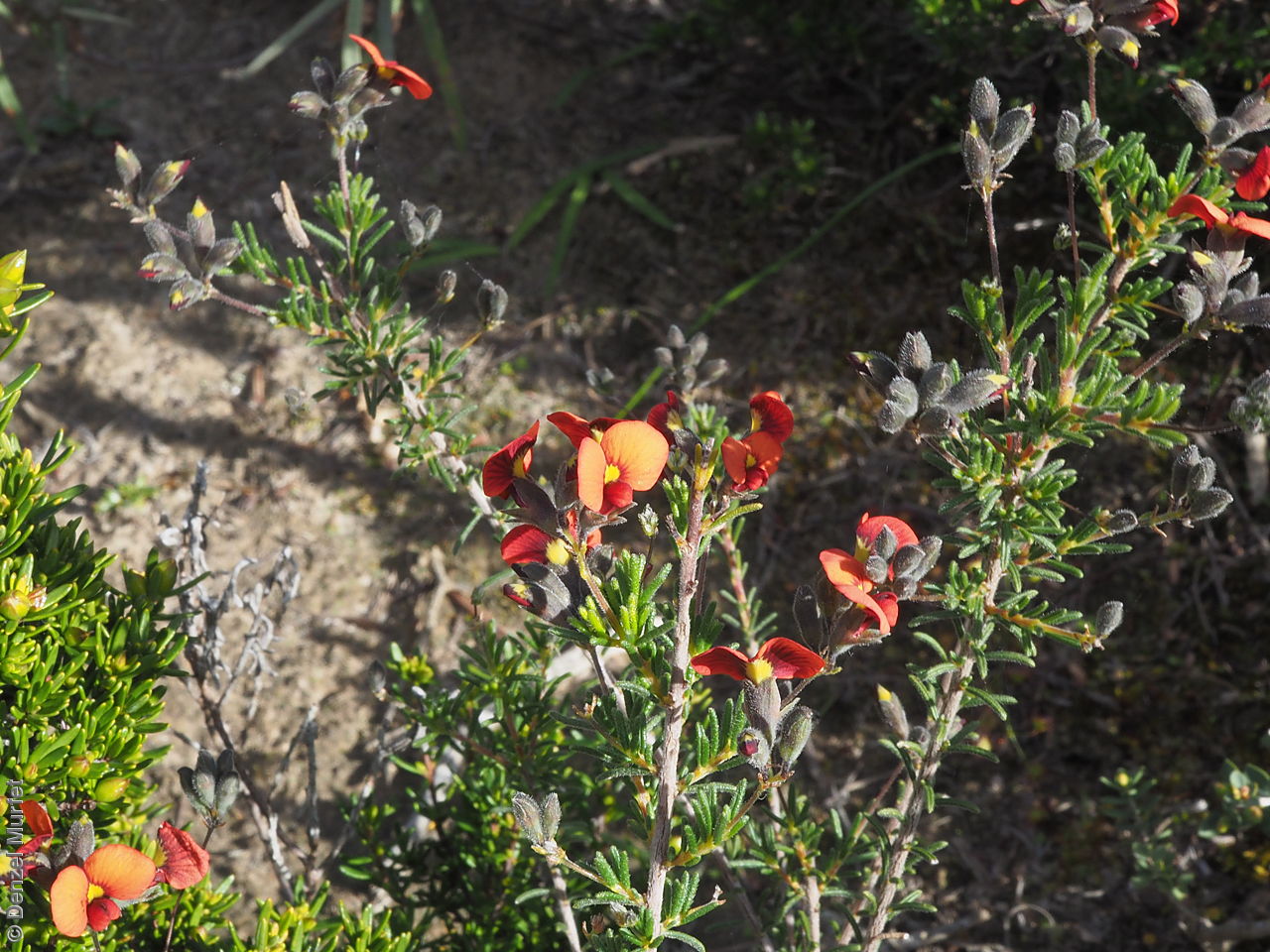
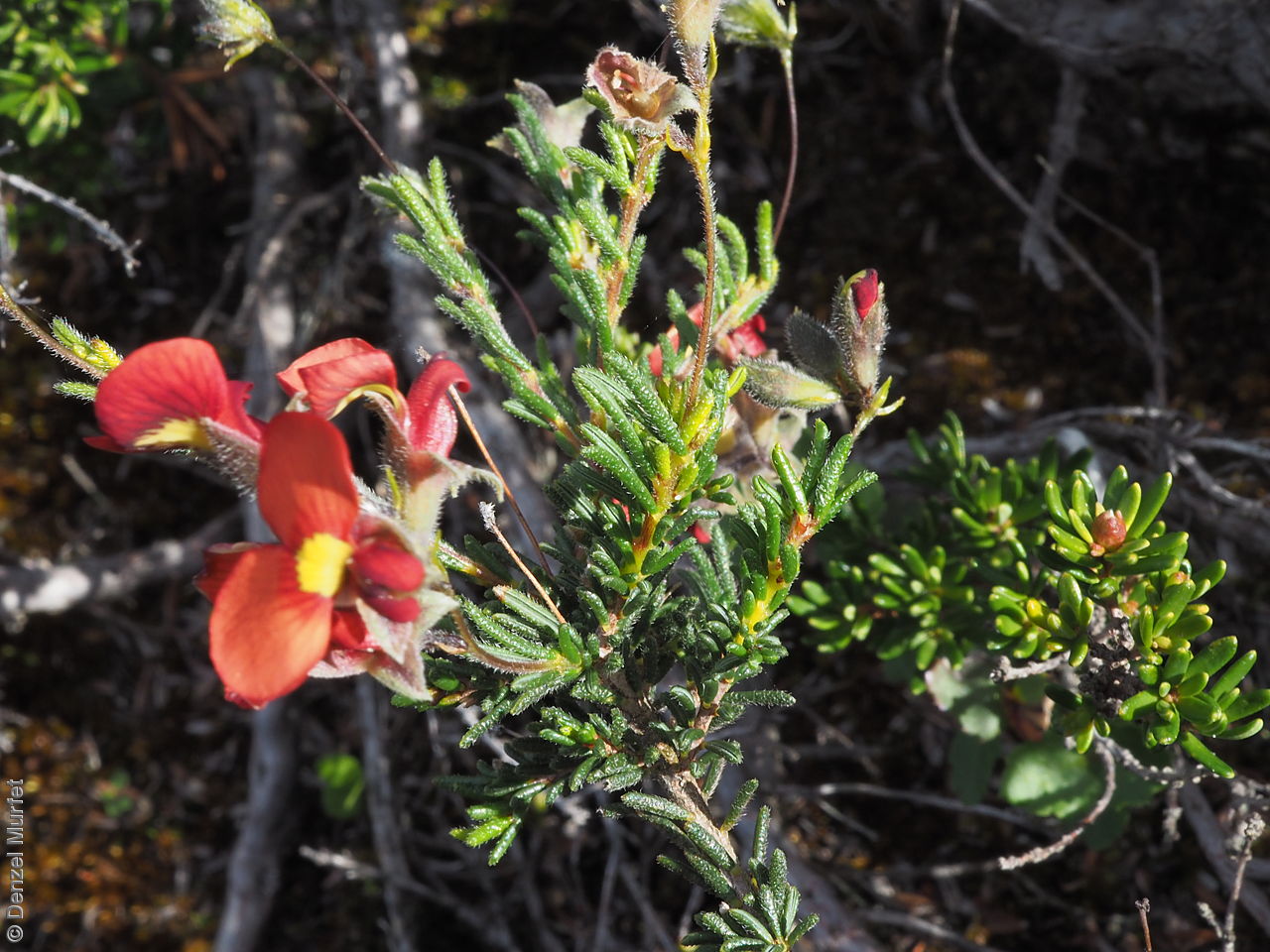
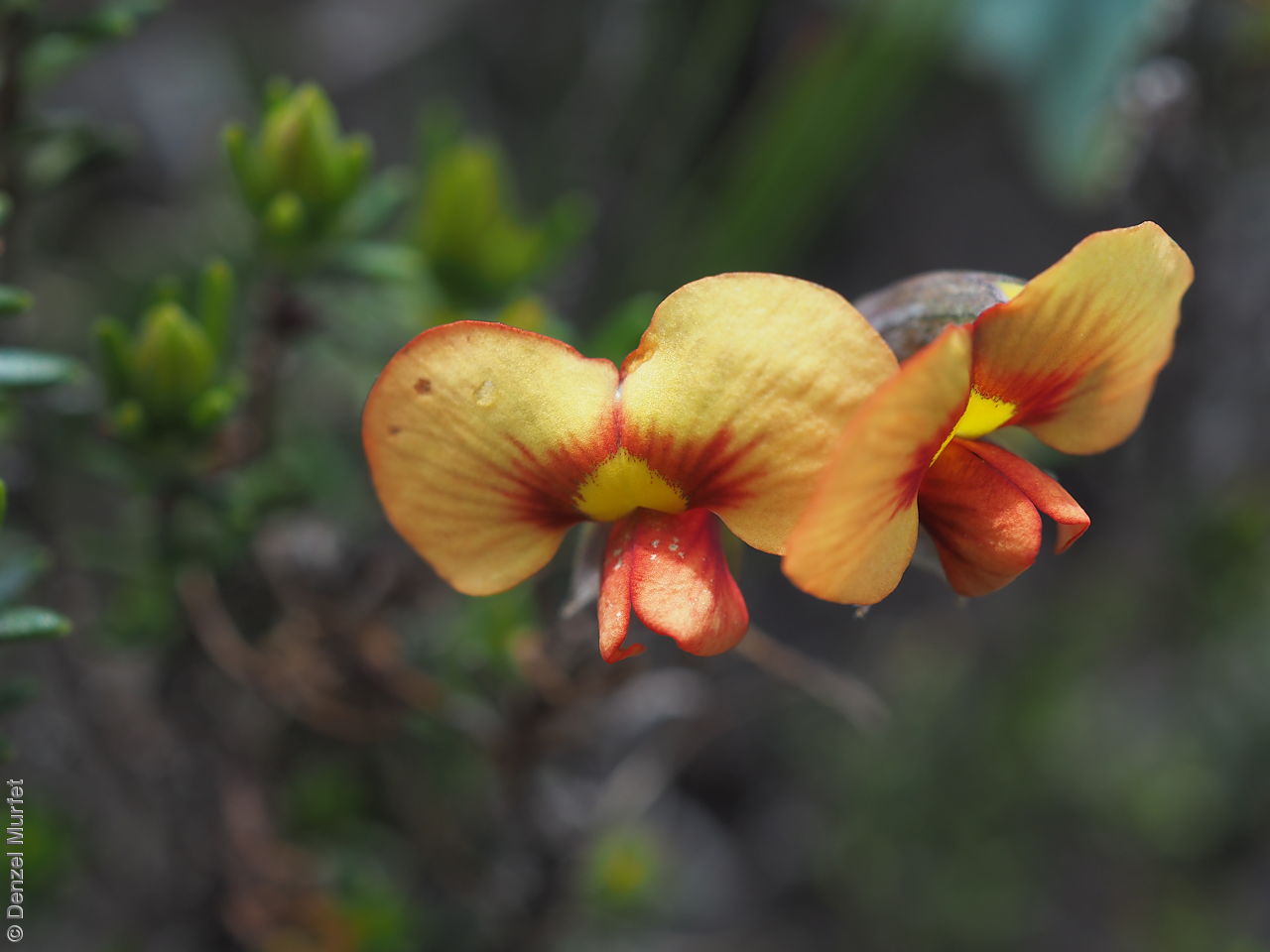
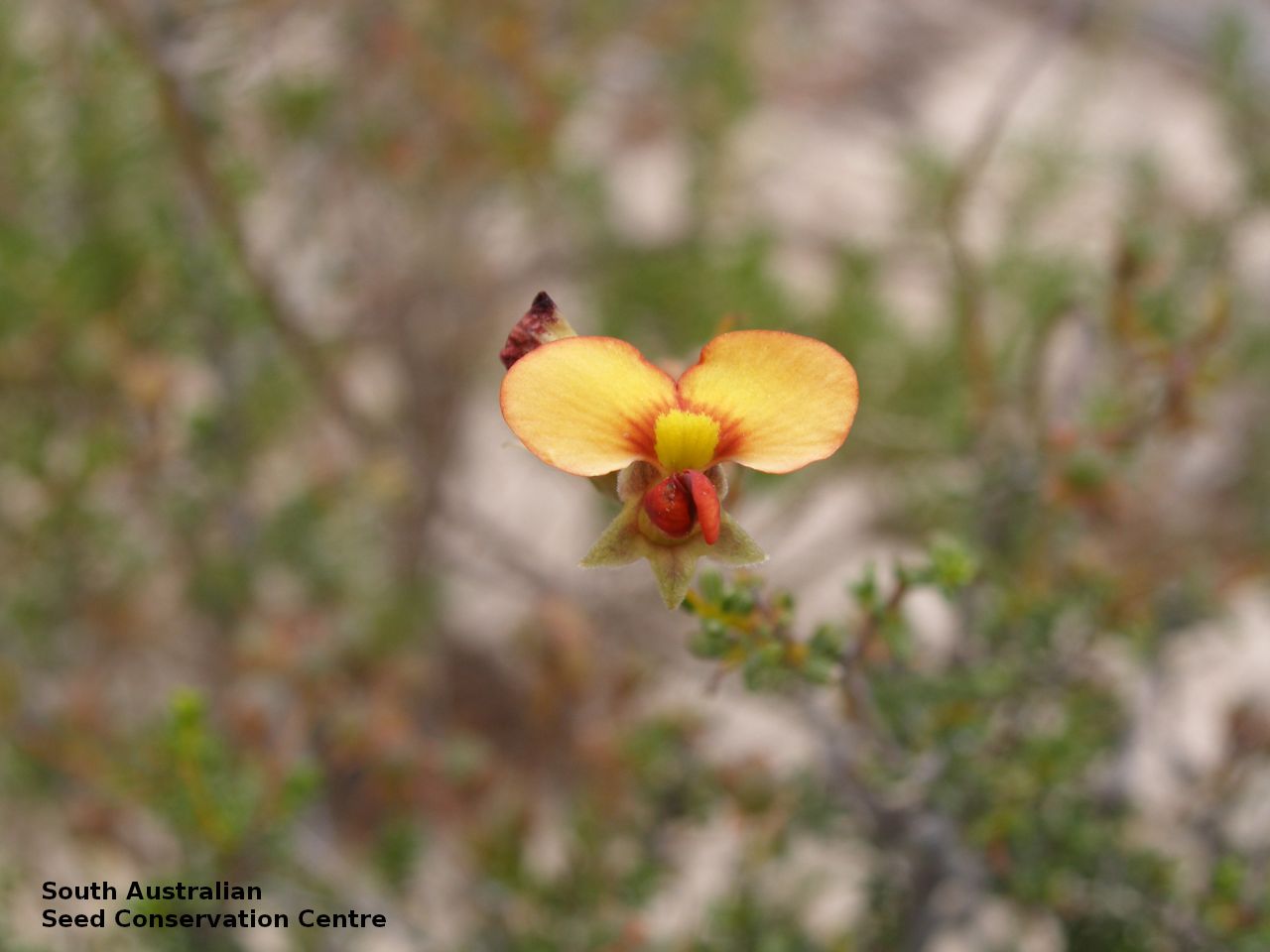
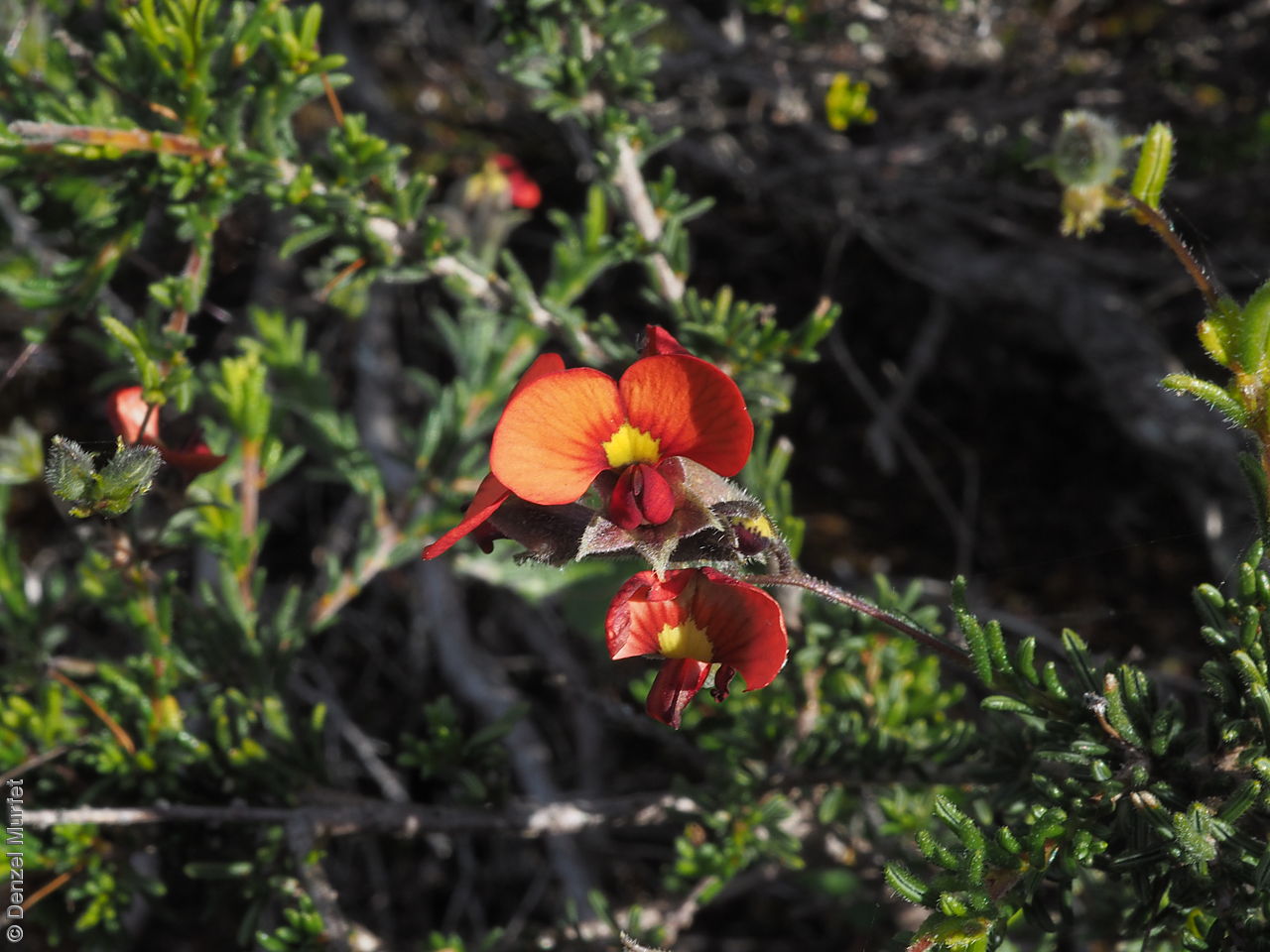
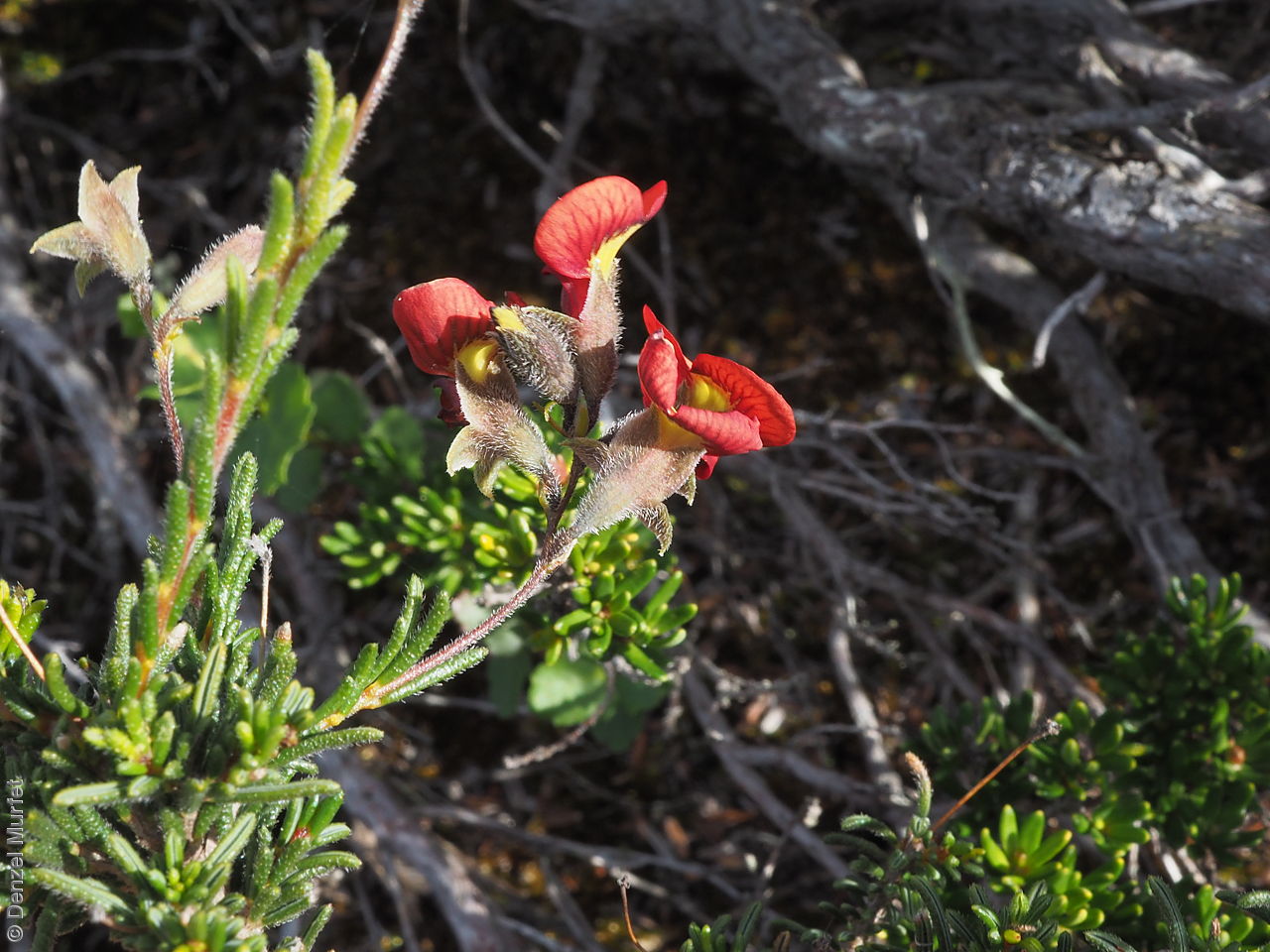
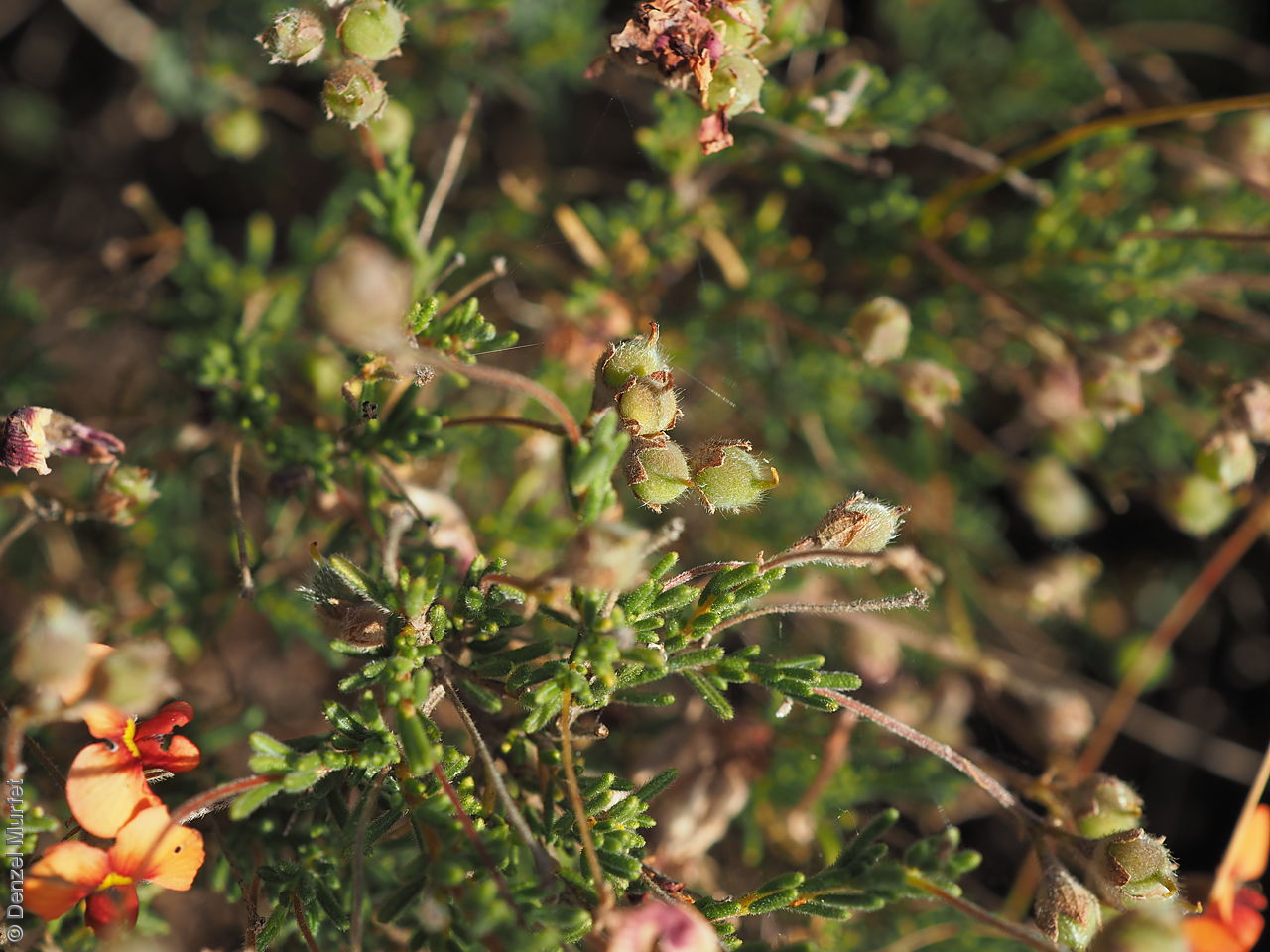

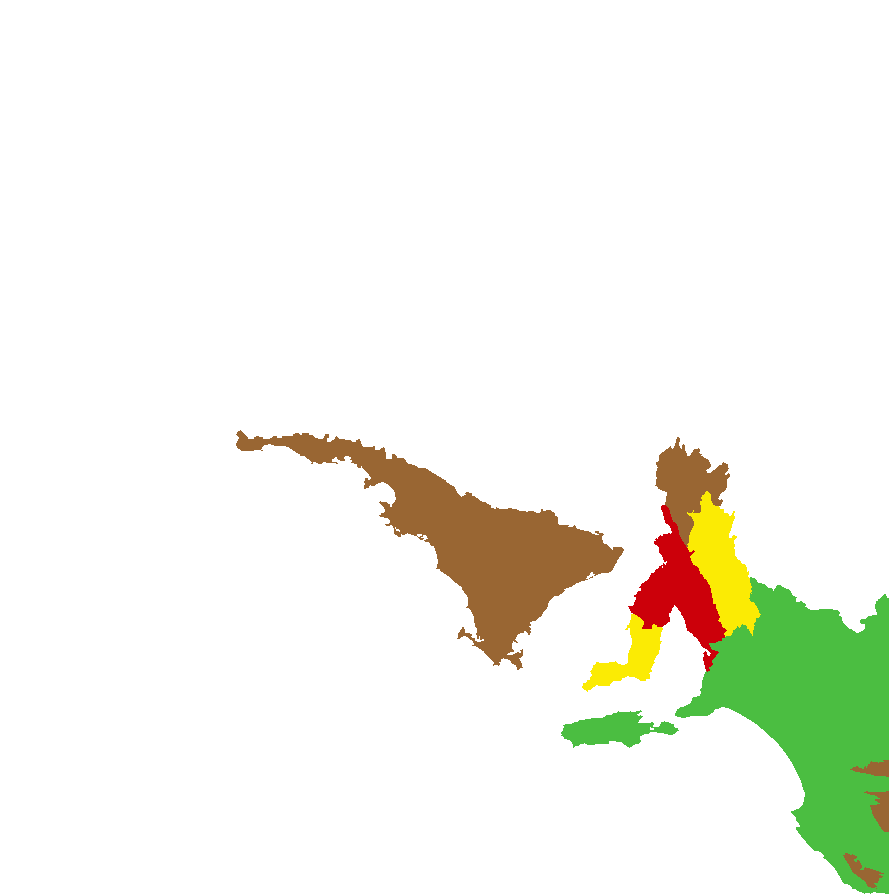
Botanical art
Common names
Red Parrot-pea
Downy Parrot-pea
Etymology
Dillwynia named after Lewis Weston Dillwyn (1778-1855), a British porcelain manufacturer, naturalist and Member of Parliament. Hispida from the Latin 'hispidus' meaning bristly hairs, alluding to the plant covered with stiff spreading hairs.
Distribution and status
Found in the southern part of South Australia from the Eyre Peninsula to the lower South-east, growing in woodland, open-forest and mallee scrub. Also found in New South Wales and Victoria. Native. Common in South Australia. Uncommon in New South Wales. Common in Victoria.
Herbarium regions: Eyre Peninsula, Northern Lofty, Murray, Yorke Peninsula, Southern Lofty, Kangaroo Island, South Eastern, Green Adelaide
NRM regions: Adelaide and Mount Lofty Ranges, Eyre Peninsula, Kangaroo Island, Northern and Yorke, South Australian Murray-Darling Basin, South East
AVH map: SA distribution map (external link)
Plant description
Erect perennial shrub to 60 cm high with more or less glabrous stems. Laves linear to thread-like with the edges turned downwards, to 10 mm long, covered with stiff hairs. Flowers arranged in groups of up to nine on the ends of branchlets on a peduncle to 40 mm long, with orange or red pea-flowers. Sepals to 8 mm long, hairy on the outside. Standard petal to 12 mm long, orange and red and keel protrudes from the red to crimson wings. Flowering between September and November. Fruits are brown ovoid to more or less spherical pods to 4 mm long and 3.5 mm wide, with white hairs. Seed one per pod. Seed embryo type is bent.
Seed collection and propagation
Collect seeds between November and January. Collect mature pods that are brown or turning brown. It should contain a black hard seeds. Place the pods in a paper bag and leave to dry for at lease a week. Then rub the seed pods to dislodge the seeds. Use a sieve to separate the seeds from unwanted material. Seed viability is usually high. This species has physiological dormancy that needs to be overcome for the seed to germinate (e.g. nicking or softening the seed coat).
| Location | No. of seeds (weight grams) | Number of plants | Date collected | Collection number Collection location | Date stored | % Viability | Storage temperature |
|---|---|---|---|---|---|---|---|
| MSB | 1,100 (2.45 g) | 50+ | 5-Jan-2006 | DJD339 Southern Lofty |
Number of plants: This is the number of plants from which the seeds were collected.
Collection location: The Herbarium of South Australia's region name.
% Viability: Percentage of filled healthy seeds determined by a cut test or x-ray.